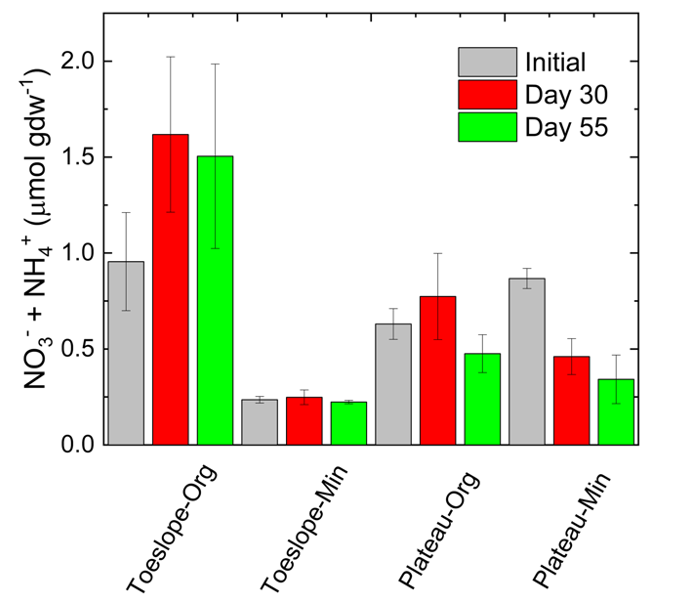

NGEE Arctic
Next-Generation Ecosystem Experiments
Advancing the predictive power of Earth system models through understanding
of the structure and function of Arctic terrestrial ecosystems
Soil Geochemistry an Important Factor Influencing the rate and Magnitude of Greenhouse Gas Production in Tundra Soils
Soil Geochemistry an Important Factor Influencing the rate and Magnitude of Greenhouse Gas Production in Tundra Soils
August 24th, 2020
Rates and controls on CO2 and CH4 production were observed for two contrasting water‐saturated tundra soils within a permafrost‐affected watershed near Nome, AK.
The Objective:
- Investigate rates and controls on CO2 and CH4 production in two contrasting water‐saturated tundra soils within a permafrost‐affected watershed near Nome, AK.
New Science:
- Field observations showed that porewater geochemistry varies up- and down-slope along an elevational gradient.
- Higher pH, higher N availability for microorganisms, and higher availability of fermentable DOC, were sufficiently different along the hillslope to drive significant differences in greenhouse gas production.
The Impact:
- Results suggest that the weathering and leaching of ions and nutrients from tundra hillslopes can increase the rate of anaerobic organic matter decomposition and CO2 and CH4 production in downslope soils.
Total extractable inorganic N (NH4+ and NO3−) in the initial soils and after 30 and 55 days of incubation.
